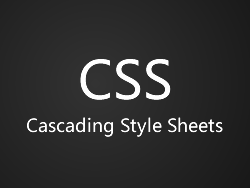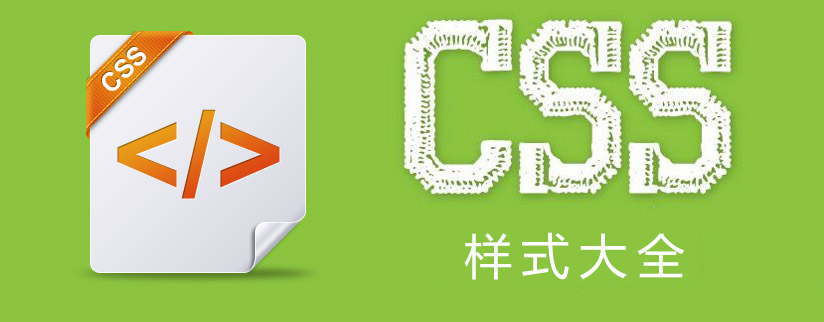Detailed introduction to common CSS properties
In the previous times, we talked about the id selector and class selector respectively, as well as their differences and connections. Let’s explore the magical classes and pseudo-elements together. In fact, I was confused about pseudo-classes and pseudo-elements before, but now I decided to peel off its mysterious coat. First of all, what is a pseudo-class? What are pseudo elements? Understanding of pseudo-classes and pseudo-elements: Official explanation: Pseudo-classes were initially used to represent the dynamic status of some elements, typically the various statuses of commonly used links (link, active, hover, visited). Later, the CSS2 standard was expanded Its conceptual scope makes it a "ghost" category for all logically existing but unidentified categories in the document tree. Pseudo elements represent the sub-elements of a certain element. Although this sub-element exists logically, it does not actually exist in the document tree, such as the after, before, etc. we usually use. My rough understanding is that a pseudo-class is a class that does not need to be identified, and a pseudo-element is an element, but it does not exist in the document tree. Regarding usage: pseudo-classes are preceded by a colon, and pseudo-elements are preceded by two colons. E:first-child pseudo-class, E::fir
1. Summary of css common attributes pseudo-elements and pseudo-elements
Introduction: In the previous times, we talked about the id selector and class selector respectively, as well as their differences and connections. Let’s explore the magical classes and pseudo-elements together.
2. CSS commonly used attributes color and unit

##Introduction: In writing CSS code, estimating color and unit is essential. However, there are many ways to write color and unit values in CSS, so it is necessary to clarify it.
3. Initial summary of common css properties: id and class selectors

Introduction: A preliminary summary of common CSS properties. The first bullet: id and class selectors

Introduction: Regarding CSS attributes, I recommend reading the manual for more details and convenience. I will classify several common attributes here and Simply take a few common attribute values, only for people like me who are just learning front-end as a starting point.
5. Summary of Common CSS Properties Four

6.
Summary of Common CSS Properties Three

7.
Summary of common CSS properties 2

8.
Summary of common CSS properties one
Introduction: ********* CSS common properties *********z-index:auto (default value) retrieves or sets the stacking order of objects. For parallel objects, the larger the value of this attribute parameter, the higher they will be stacked on top. For example, this attribute of two objects has 9. CSS common attributes and values_html/css_WEB-ITnose Introduction: CSS common properties and values
The above is the detailed content of Detailed introduction to common CSS properties. For more information, please follow other related articles on the PHP Chinese website!

Hot AI Tools

Undresser.AI Undress
AI-powered app for creating realistic nude photos

AI Clothes Remover
Online AI tool for removing clothes from photos.

Undress AI Tool
Undress images for free

Clothoff.io
AI clothes remover

Video Face Swap
Swap faces in any video effortlessly with our completely free AI face swap tool!

Hot Article

Hot Tools

Notepad++7.3.1
Easy-to-use and free code editor

SublimeText3 Chinese version
Chinese version, very easy to use

Zend Studio 13.0.1
Powerful PHP integrated development environment

Dreamweaver CS6
Visual web development tools

SublimeText3 Mac version
God-level code editing software (SublimeText3)

Hot Topics
 1664
1664
 14
14
 1423
1423
 52
52
 1318
1318
 25
25
 1269
1269
 29
29
 1248
1248
 24
24
 How to Create an Animated Countdown Timer With HTML, CSS and JavaScript
Apr 11, 2025 am 11:29 AM
How to Create an Animated Countdown Timer With HTML, CSS and JavaScript
Apr 11, 2025 am 11:29 AM
Have you ever needed a countdown timer on a project? For something like that, it might be natural to reach for a plugin, but it’s actually a lot more
 HTML Data Attributes Guide
Apr 11, 2025 am 11:50 AM
HTML Data Attributes Guide
Apr 11, 2025 am 11:50 AM
Everything you ever wanted to know about data attributes in HTML, CSS, and JavaScript.
 A Proof of Concept for Making Sass Faster
Apr 16, 2025 am 10:38 AM
A Proof of Concept for Making Sass Faster
Apr 16, 2025 am 10:38 AM
At the start of a new project, Sass compilation happens in the blink of an eye. This feels great, especially when it’s paired with Browsersync, which reloads
 While You Weren't Looking, CSS Gradients Got Better
Apr 11, 2025 am 09:16 AM
While You Weren't Looking, CSS Gradients Got Better
Apr 11, 2025 am 09:16 AM
One thing that caught my eye on the list of features for Lea Verou's conic-gradient() polyfill was the last item:
 A Comparison of Static Form Providers
Apr 16, 2025 am 11:20 AM
A Comparison of Static Form Providers
Apr 16, 2025 am 11:20 AM
Let’s attempt to coin a term here: "Static Form Provider." You bring your HTML
 How to Build Vue Components in a WordPress Theme
Apr 11, 2025 am 11:03 AM
How to Build Vue Components in a WordPress Theme
Apr 11, 2025 am 11:03 AM
The inline-template directive allows us to build rich Vue components as a progressive enhancement over existing WordPress markup.
 The Three Types of Code
Apr 11, 2025 pm 12:02 PM
The Three Types of Code
Apr 11, 2025 pm 12:02 PM
Every time I start a new project, I organize the code I’m looking at into three types, or categories if you like. And I think these types can be applied to
 PHP is A-OK for Templating
Apr 11, 2025 am 11:04 AM
PHP is A-OK for Templating
Apr 11, 2025 am 11:04 AM
PHP templating often gets a bad rap for facilitating subpar code — but that doesn't have to be the case. Let’s look at how PHP projects can enforce a basic




